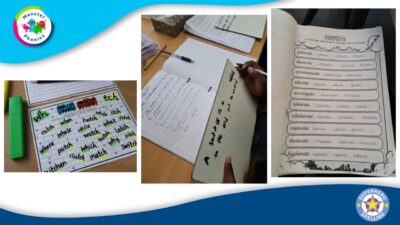

Spelling often gets pushed aside. Between writing, grammar, and everything else demanding attention, it’s tempting to treat it as a quick list-based activity. But with small, purposeful shifts, spelling can become a more meaningful—and manageable—part of your literacy offer.
This blog shares five practical, research-informed strategies that make a real difference without adding to your workload.
1. Use Dictation to Give Spelling Purpose
Why it works: Dictation puts spelling into context. Instead of learning words in isolation, pupils practise applying them within full sentences—supporting grammar, punctuation and handwriting at the same time.
EEF guidance recommends integrating spelling into writing tasks wherever possible for maximum impact.
Try this:
2. Teach Word Structure Explicitly
Why it works: Teaching morphology (prefixes, suffixes, roots) helps pupils understand how words are formed. They can then apply these patterns to unfamiliar vocabulary.
Try this:
3. Revisit and Reuse: Don’t Just Move On
Why it works: Spaced retrieval—revisiting learning over time—strengthens memory. If spelling is only practised once, it’s unlikely to stick.
Try this:
4. Link Spelling with Writing
Why it works: Spelling should be part of the writing process. Pupils need regular chances to apply spelling strategies in real tasks—not just during isolated lessons.
Try this:
In one Year 5 class, pupils began using –ible/–able endings more consistently—not after a test, but after applying them in short dictations and then spotting them in their own writing.
5. Keep It Simple, Varied and Consistent
Why it works: Effective spelling doesn’t need flashy tech or complicated games. Clarity, regularity, and small variations in how pupils encounter words are what really matter.
Try this:

Summary
You don’t need to overhaul your spelling programme. Small, focused changes—like replacing word lists with dictation, revisiting patterns regularly, and linking to writing—can have a big impact.
If you’re helping pupils understand how words work and giving them regular, meaningful practice, you’re already doing the most important work.
Why not try one small change this week? Swap a list for a short dictation, revisit a tricky suffix, or highlight a spelling success in writing—and see what happens.
Register
To get access to our FREE samples.